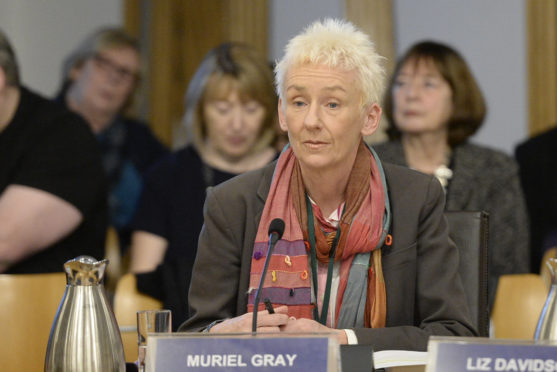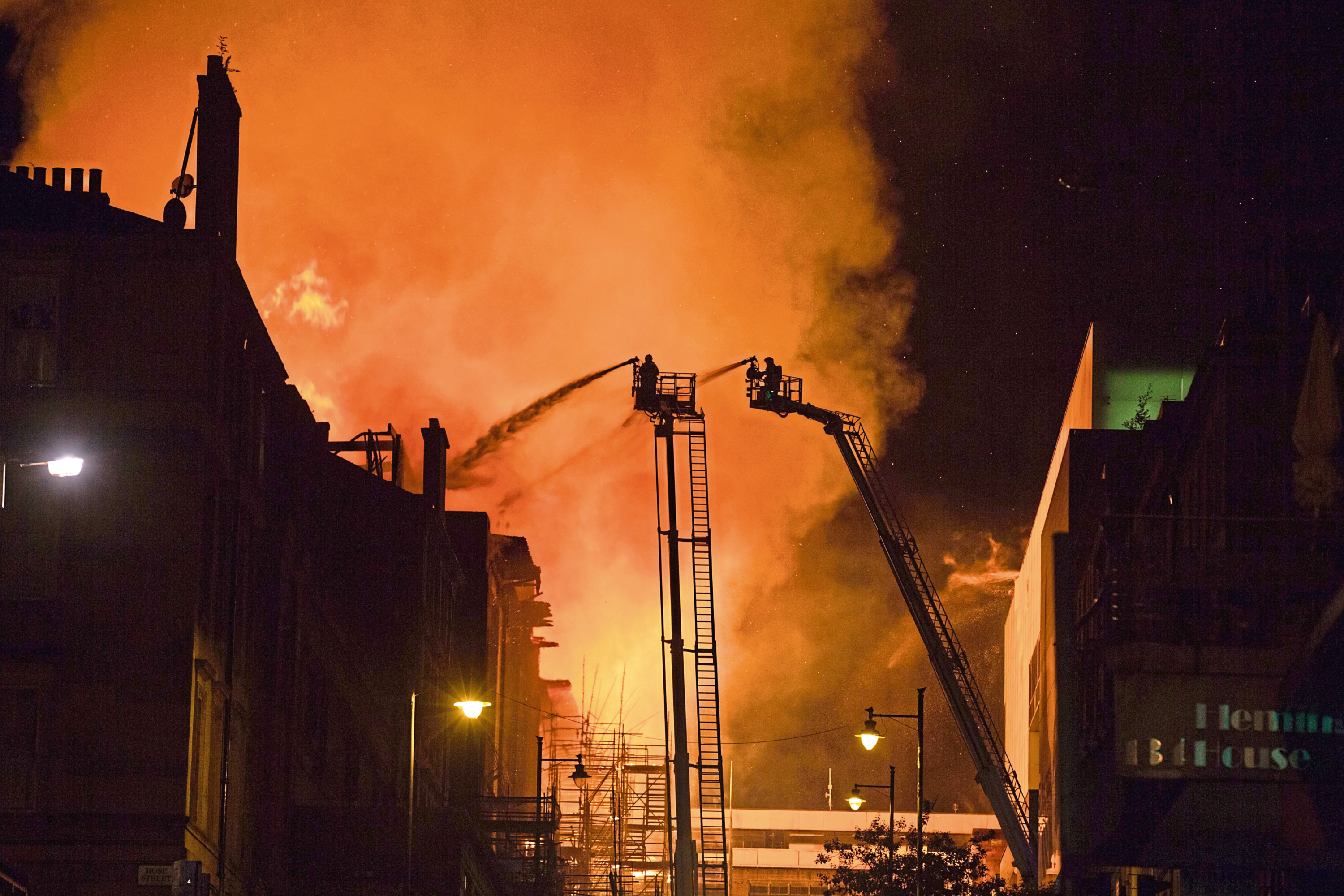
The director of the Glasgow School of Art was forced to leave work against his will by chairwoman Muriel Gray as he led the response to a second devastating fire, we can reveal today.
The turmoil at the very top of school is exposed in emails between Tom Inns and Ms Gray, who told IT staff to close his computer accounts when he refused to stop work.
The extraordinary exchanges reveal how relationships between Mr Inns, who was chief executive of the school, and the leader of the board broke down after the second fire at the iconic Charles Rennie Mackintosh building in June last year.
Broadcaster and writer Ms Gray returned from a two-month leave of absence from the art school in October and met Mr Inns days before a crucial board meeting.
Emails show that after the meeting between them Mr Inns was told he was unwell, unfit for work and should go home until school’s occupational health advisers could assess him. When he refused, his IT access was suspended.
Mr Inns, responsible for 400 staff and 2,500 students, then used a personal email account to tell colleagues of the “totally bizarre position” and warned “should there be an emergency or critical incident over the weekend our normal email communication links have been compromised”.
The emails, seen by the Sunday Post, have been sent by a whistleblower to the Scottish Funding Council, which gives the art school £15 million in grants a year.
Calls for a public inquiry into the management of the art school have intensified in recent weeks after a Sunday Post investigation revealed how millions of pounds donated to the school after the first fire, in 2014, were used to fund the expansion of the college after insurance covered the cost of restoring the gutted building.
Yesterday, Glasgow North East MP Paul Sweeney said the apparent rift among the senior leadership team exposed in the emails demands investigation, adding: “It is dismaying to see this level of dysfunctionality at the top of the management of the art school.
“It only adds to the need for a thorough public inquiry into the management of the art school and the rigour of the governance there.”
Architect Gordon Gibb, director of professional studies at the GSA’s architecture department, said: “There are now very clear and very serious questions about how the director left his position.
“I cannot see how the school can move forward without all those involved in his removal being held properly to account and giving the answers to these questions demand.”
Mr Inns was director of the art school for four years. He earned a salary and pensions package in excess of £180,000 a year, but sources suggest he received £250,000 when he left suddenly on November 2 last year. It is thought he did not return to his job after being sent home by Ms Gray three weeks earlier.
During his time in office, the building designed by Charles Rennie Mackintosh and known as The Mack was twice devastated by fire.
When his resignation was announced, Ms Gray said he had “the most challenging tenure at the helm of GSA and we are truly grateful for all his enormous commitment and hard work – especially over the course of the past few months”.
But behind the scenes, Ms Gray suggested he was suffering from stress after a meeting with him on October 11 last year. In an email to him the next day at 5.22pm, she wrote: “You are continuing to work despite being explicitly instructed to stop working until OH input regarding your fitness to work can be obtained. This is unacceptable.”
She warned that unless he stopped working his computer access would be suspended.
At 11.21pm, Inns emailed colleagues from a personal email address that he had been put in a “totally bizarre” situation.
“Although the last 16 weeks have been stressful, I am totally capable of fulfilling the role of GSA director,” he wrote.
He also said he was “extremely concerned” about the “vulnerable” position GSA would be put in.
Since leaving his post, Mr Inns has called for the restoration of the Mackintosh building to be carried out by an independent trust rather than the board of governors. In a submission to Holyrood’s culture committee, he said The Mack should be rebuilt but by a separate trust, while the board runs the art school.
The emails have been sent to the Scottish Funding Council by a senior member of staff, who described it as a “very significant and serious example of recklessness”. They said Mr Inns had led GSA “with calm and focus” after the fire in June last year.
The letter said: “This complete disregard for good governance and other institutional management protocols has continued unchecked at GSA since November 2018. That is why 70 staff have left the institution in nine months.”
According to GSA board minutes for October 15, apologies were received by Mr Inns for his absence from the meeting.
Minutes also say Ms Gray took a leave of absence between August 1 and October 14 last year “but remained fully involved as a lay governor”.
She announced in June this year she was stepping down from her role for a “temporary period” for family reasons.
Earlier this month the Sunday Post revealed 40 staff have resigned since the second blaze while 30 have been made redundant. Six signed confidentiality agreements while payoffs to departing staff totalling £210,000.
We also told how an international appeal raised £20m to rebuild Glasgow School of Art after the first fire, even though insurance payouts covered the restoration work.
Critics claims the art school failed to make clear where the donations were being spent and that cash given to rebuild the Mackintosh was spent on purchasing new buildings and renovating parts of the building untouched by the fire.
The Scottish Funding Council said: “We are engaging regularly with Glasgow School of Art as it continues to respond to the challenges of the 2018 fire and many of the issues covered in the letter have been raised in that process.
“Staffing matters are the responsibility of individual institutions.”
Glasgow School of Art said: “We can’t comment on specific circumstances relating to members of staff, past or present.”
The school has said funds donated during the appeal were used properly and transparently to enable the school to “recover from the consequences of the fire. In 2016, the Mackintosh campus appeal was launched to support a more holistic approach to the Mackintosh building restoration”.

Enjoy the convenience of having The Sunday Post delivered as a digital ePaper straight to your smartphone, tablet or computer.
Subscribe for only £5.49 a month and enjoy all the benefits of the printed paper as a digital replica.
Subscribe © Robert Perry.
© Robert Perry.